With the nut off, I can see the damage a bit better:
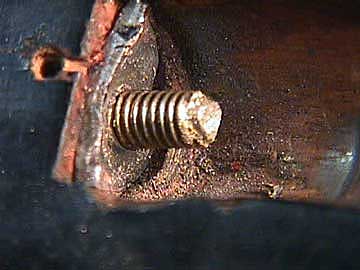
Notice how deeply the washer was mashed into the neck wood. Looks like the end of the rod has been broken off, but it may just have been scarred by an inept tool using animal.
Here are the damaged parts:
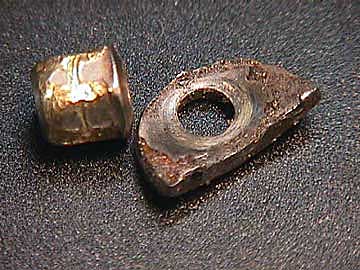
I took my stout violin maker knife and cut the wood back all around the rod to provide a flat surface for the new washer to bed down against:
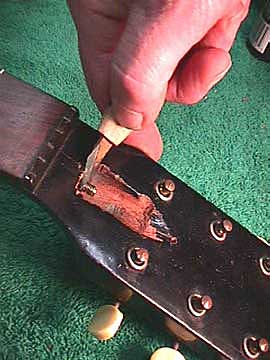
I made a new thick washer from a square nut, and replaced the truss rod adjusting nut with a nice new one:

With good lubrication, this system tightens up very nicely. My extra thick washer doesn't deform under the load, and the rod can be tightened without further damage to the truss rod, nut, or pocket.
Truss Rod Nuts and Fittings
This is the original Gibson truss rod cover:
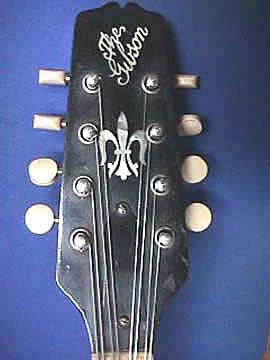
Well, not THE original, but this one does date from 1925. Gibson continues with exactly the same single rod compression system as they used in the old days, and still has the adjustment nut at the peghead, covered by this little plastic plate.
Gibson uses either 5/16" or 1/4" adjustment nuts, depending on the instrument. The nuts are easy to reach with a socket wrench or nut driver, and adjustments can be made while the instrument is tuned to pitch.
Taylor also makes it easy for us:
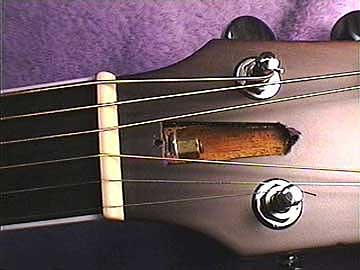
Lots of nice clearance around the 1/4" nut here:
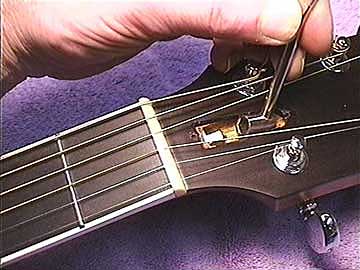
This 30 year old Italian-made Eko guitar has a really cheesy little round nut with holes in which you can stick a tool to adjust it:

The nut won't clear the end of the cavity if you try to take it all the way off to lubricate it.
More